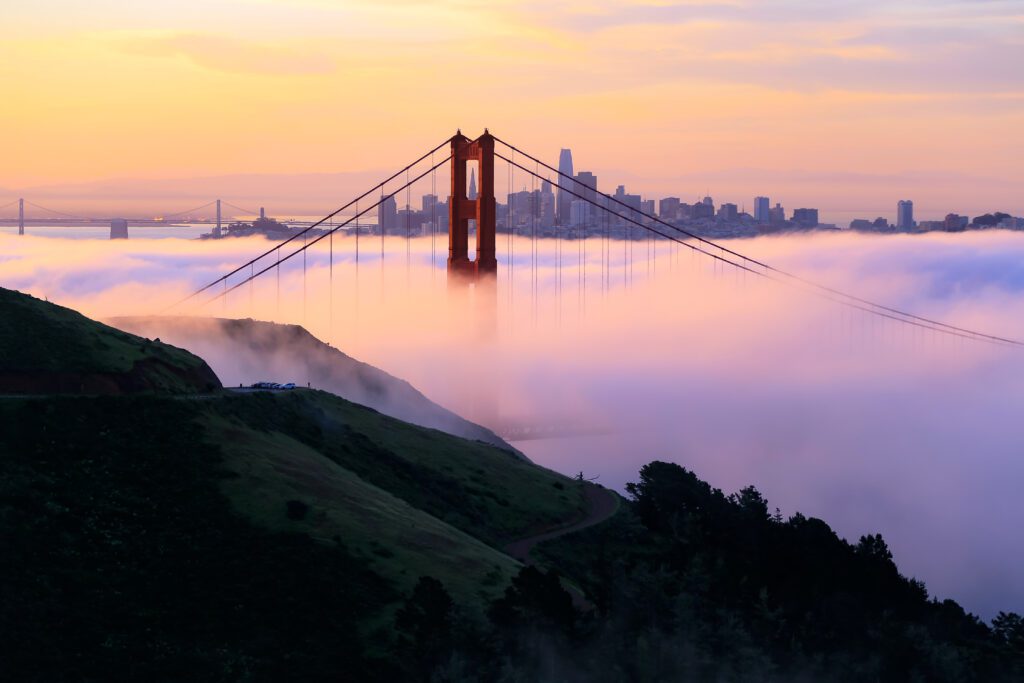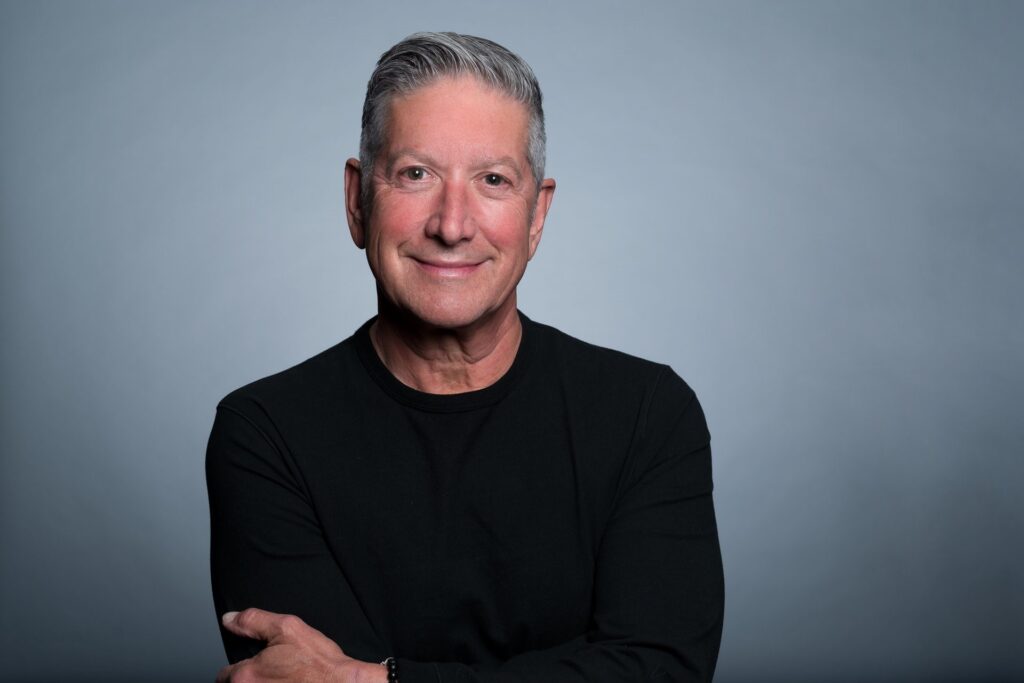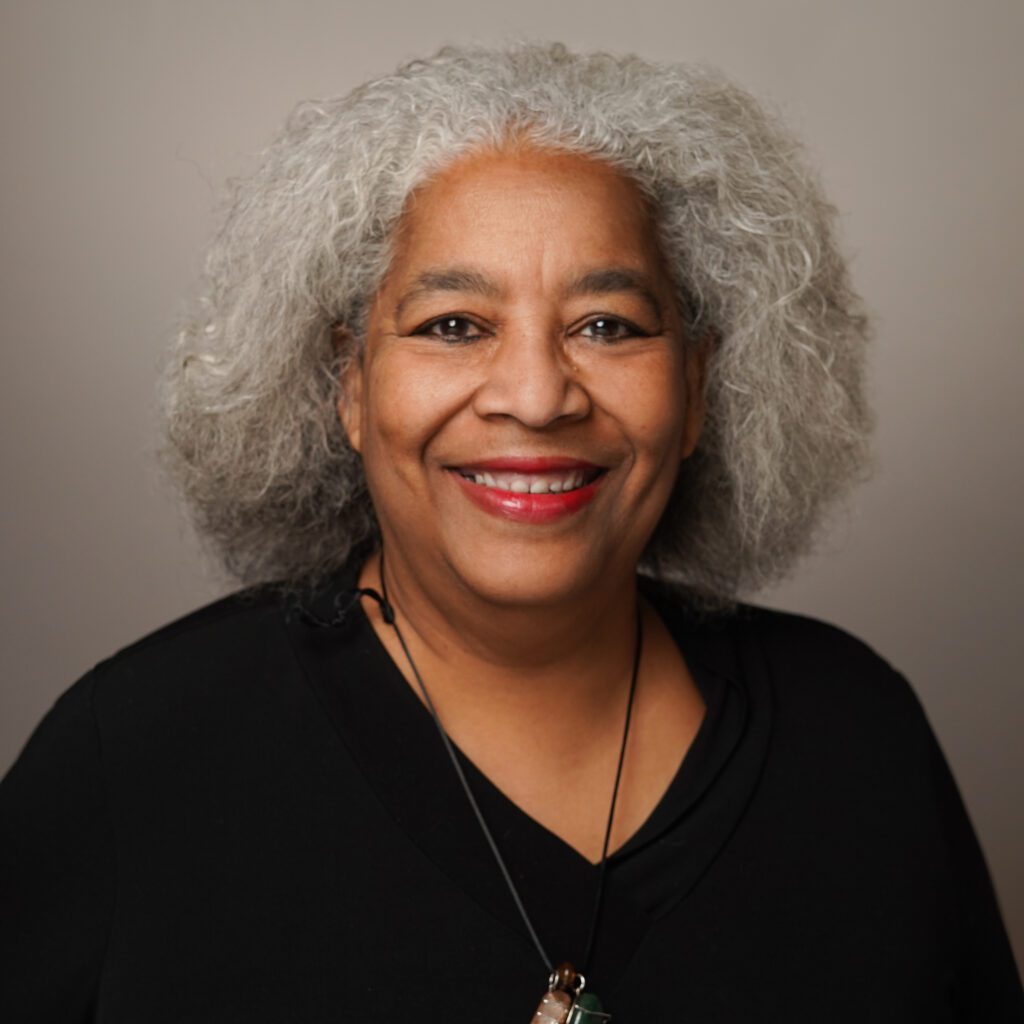
Since the boom of the Gold Rush days, a long history of championing initiatives has made San Francisco an international landmark. Since 1850, the San Francisco Chamber of Commerce has been part of that story. And before electricity was widely available, before automobiles were popular, before airplanes even existed, TEL HI was helping people. San Francisco Travel Association traces its history to a post-earthquake recovery in 1909. Eleven years later in 1920, the Booker T. Washington Community Center was founded.
We take a moment to look ahead in conversation with the community leaders of these legacy community organizations as well as the Hotel Council, a more recent addition to the community landscape.

Joe D’Alessandro, President & CEO
San Francisco Travel Association
HL: What does recovery look like for San Francisco for the rest of 2021 and 2022?
JD’A: I am pretty optimistic as we can clearly see light at the end of the tunnel, however 2021 will still be a challenging year for our industry. As vaccination rates improve and COVID restrictions are being eased, hotel occupancy has slowly but gradually gone up over the last couple of weeks, which is very encouraging. Significant improvement could be in store by the end of 2022. San Francisco was hit particularly hard during the pandemic as we traditionally depend a lot on group, business, and international travel. In 2019, 63% of all visitor spending in San Francisco was by international travelers and that market virtually disappeared overnight.
HL: And beyond?
JD’A: We hope to see consistent improvement going forward during a multi-year recovery until we get back to 2019 levels, probably by 2022 to 2024.
HL: What types of visitors are coming first, where are they coming from, and how long are they staying?
JD’A: We see domestic travel markets picking up already, with leisure travel expected to fully recover in 2023. Visitors from the Bay Area and from California will be first in line, followed by visitors from other parts of the United States. Road trips will be extremely popular in 2021, and San Francisco is the perfect starting point for a road trip to wine country and south along the iconic Highway 1. Local and regional visitors will most likely stay shorter than what we would typically see from an international guest, probably between 1 and 2 nights on average.
HL: What activities are they safely engaging in?
JD’A: San Francisco has managed the pandemic extremely well. With that, visitors in San Francisco can now safely enjoy the city under increasingly normal circumstances, even indoor activities, like dining in one of our amazing restaurants or visiting one of our world class museums, 90% of which are now open. And, thanks to more than 1,200 new parklets that our restaurants have added during the pandemic, outdoor dining in San Francisco is now a whole new experience.
HL: What are the prospects for business travel and conventions?
JD’A: We expect business travel to hover about 75% below its 2019 level for the remainder of the year. Hopefully, small group events can resume during the third quarter as international travel restrictions ease and clear guidelines allow better planning. Full recovery of the city’s most impacted segment, convention-related travel, in terms of volume and spend is forecast by 2025.
HL: And for international visitors? Which markets first?
JD’A: Europe is likely to be the first overseas market to come back later this year, probably followed by some of the Asian markets and Australia in 2022. Overall, we expect international visitation to be back to pre-COVID levels by 2024.
HL: What can residents do in terms of positive word-of-mouth to help in the recovery?
JD’A: Venture out and enjoy everything that our wonderful city has to offer. Be a tourist in your own backyard and tell everybody that “Our Gate is Open”—true to the motto which we at SF Travel have chosen for our current marketing campaign. sftravel.com

Rodney A. Fong
方 達 利
President & CEO
San Francisco Chamber of Commerce
HL: Are you bullish on San Francisco, and if so, why?
RF: Absolutely. I think San Francisco’s best years are ahead of us. My family has been in San Francisco for four generations, through many ups and downs. Our city is unlike any place in the world, and through those 99 years we have always believed in one thing, which I believe even more today: that we can make San Francisco better, together.
HL: Do you think the face of downtown has changed for good?
RF: Yes, and my hope is that out of this, some things will change for the better. We have seen new businesses pop up in vacant spaces downtown, small businesses pivot their products to meet new needs, and residents and businesses move back into the city after quarantine. Evolution is part of business, and we’ve seen that in the physical expansion of business into our city streets, adding additional vibrancy to our corridors.
HL: Because fewer workers will occupy offices less often, can the downtown core refresh and come back better?
RF: Yes. But, we have to give people a reason to come back downtown. Our city’s economy depends on the vibrancy of our downtown core. San Francisco’s downtown businesses bring in hundreds of thousands of local jobs, commuters, and visitors who are essential to the success of our small businesses. This is our opportunity to reimagine downtown, get creative, and make its prosperity accessible to all our communities.
HL: Small businesses that surround big ones contribute so much to the character, fabric and personality of any city. Are you concerned about their survival?
RF: Since the beginning of the pandemic, we’ve seen about 50% of the small businesses that were open pre-pandemic close. This was a huge loss to our city. Though we’re now seeing the rate of small business closures slowing as restrictions loosen, their recovery depends on prioritizing policies that support entrepreneurs. We look to our city leaders to ensure that small businesses have the resources and support they need to survive, recover, and thrive.
HL: Crystal ball: In what ways will San Francisco be different from its pre-pandemic self over the next 3-5 years?
RF: San Francisco is a city of reinvention, and this is another opportunity to reinvent ourselves. Shared Spaces is a great example of this. With it we are seeing more vibrancy in our neighborhoods, and this is something I think will remain an important part of our city. I also think the work week will evolve into a more hybrid model. With this in mind, we want to continue to invest in programs and policies that draw our workers to frequent our city’s small businesses, whether that’s during a work lunch downtown while in their office or an afternoon walk through a neighborhood commercial corridor on a remote work-day.
HL: Any silver lining to come out of this crisis?
RF: Yes, through the incredible challenges that our communities have faced, I have seen small business leaders step up and take action. This community has grown and united across many industries that did not always have an active role in city government. It is truly a silver lining to see that our city has gained so many new, engaged, and passionate leaders. sfchamber.com

Nestor L. Fernandez II
CEO/Executive Director
Tel Hi Neighborhood Center
HL: As a legacy nonprofit dating back to 1890, what is the mission of TEL HI?
NF: “To enhance the lives of people in our community.” Our youngest client is three months old and our oldest is 102.
HL: Is this exclusively for residents in the Telegraph Hill Neighborhood?
NF: Absolutely not. We serve students at Francisco Middle School who come from all over the city to this “new immigrant school,” which means that newly arrived students from other countries are placed there. Also, our preschool is rated as one of the best preschools in San Francisco and attracts families from all over San Francisco. Additionally, our seniors often travel across the city to attend our lunch program and exercise classes. Our location in Telegraph Hill makes us appear to be in an upscale neighborhood but in reality, we have affordable housing a block away from our campus and $10 million dollar homes just up the hill. It is truly a good mix of people from different cultures, nationalities and economic backgrounds.
HL: Have you been able to keep things going during the pandemic?
NF: Yes, we never closed due to the pandemic—not for one day! We made a scary choice, at the time, that it was important for TEL HI to stay open to serve the San Francisco community. We kept our doors open, providing childcare for children of essential workers, doctors, nurses, fire and police men and women, as well as other front line workers. We also kept our senior food program operating to make sure that our seniors had something to eat. We provided virtual learning from day one by upgrading our technology to make sure that we were able to connect with our kids, and that the kids who came to the center were able to connect to their classrooms and schools. Our staff provided manpower for the food pantry where we served over 3,000 families at the peak. In short, TEL HI never closed its doors to the community, and we are actively looking for ways to expand our programs and services.
HL: How are these efforts supported financially?
NF: Initially we received immediate support from donors who knew us well. They saw that we were open, providing services, and making a difference; they didn’t hesitate to support us financially. As more people came to know us, we began receiving funding from new donors. Fortunately, funding we receive from the city continued, supporting the critical work that we do. In fact, Mayor London Breed presented TEL HI with a letter of commendation for that work during the early days of the pandemic.
Additionally, several foundations we work with closely came forward with financial support. And rather than cancel our annual fundraiser which was scheduled at the Palace Hotel, we did our first ever virtual fundraising event. I think we were as scrappy as we have ever been because the stakes were so high! But we’re not done yet. There is a huge challenge on the horizon of how we transition our clients from sheltering in place to in-person services—not to mention the students who will need our assistance as they re-enter the classroom for live instruction. There’s still a lot of work to do!
HL: Anything new at TEL HI?
NF: Yes! The biggest news I can share with you is the opening of our new childcare center at 188 Pierpoint Lane, a half-block from the Chase Center at Mission Bay. Our new childcare center is amazing…the layout of the classrooms, the playground and structure, and the location. We are extremely proud to be able to offer childcare to Mission Bay residents and those who work in the area.
This project has been in the works for over six years, and we are finally ready to open our doors to 61 infants, toddlers and preschoolers sometime this summer. This is big news for TEL HI as we are expanding our reach outside of the North Beach/Fisherman’s Wharf area.
HL: What are your goals for the next 3-5 years?
NF: A few important projects: Expanding our childcare centers into other parts of San Francisco and the Bay Area; deepening our commitment to providing STEAM (science, technology, engineering, arts and math) curriculum by creating a Makerspace and recruiting experienced educators; providing important professional development opportunities for our staff; and looking for ways to venture deeper into social enterprise opportunities that will bring revenues so that we can reinvest in our programs and services to further our reach and increase the number of people we’re able to serve.
We measure success not by net income, but by the number of people we are able to serve. That has now grown from 300 per day when I started in my role to currently over 1,200 per day. telhi.org

Shelley Bradford-Bell, Interim Executive Director
Booker T. Washington Community Service Center
HL: As a community nonprofit, what is the mission of Booker T. Washington?SBB: “To empower the lives of our neighbors by offering individuals and families the services and support they need to become self-sufficient.” This means keeping our focus on the needs of the community and providing programming that addresses the fundamental needs of families.
HL: For what age groups does Booker T. provide services?
SBB: We have a generational approach. From children entering nursery school, to our teen after school programs and Transition Age Youth Services, we provide a wealth of programs. Our Senior wellness program provides exercise, cooking, and other programs to keep our senior community engaged. Our children must be educated, our families must be housed, stomachs must be fed, and elders must be cared for.
HL: Can you tell us about the foundational pillars?
SBB: Nurture, Inspire, Empower are the guideposts from which the center serves community. We nurture our young with day care, after school, tutorial, summer camps and more. We inspire all to seek wellness with our garden program, healthy foods policy and more. We empower our seniors to live healthy, independent lives, with grocery delivery services, and via partnership with Project Open Hand to deliver meals, plus online yoga, cooking, and movie nights to keep them engaged and socializing with others.
HL: Have you been able to keep things going during the pandemic?
SBB: It has been tough, but the staff at the Center is resilient and committed. When the shutdown happened, we were only closed for about two weeks so we could prepare for safe, socially distanced programs for children who had to come in for online learning with their schools, or for after school programs to allow parents who had to work to feel secure. We made sure our seniors did not become afraid and isolated, and that they had nutritional meals each day. We started Friday night movies for seniors, yoga, and cooking classes. We did not have to change who we served, we just changed how we served them.
HL: How are these efforts supported financially?
SBB: We have the greatest staff on earth. We raise funds to help homeless families and help the community with COVID information, testing and vaccinations. opportunities.
The money raised from our 100th Anniversary Celebration in November 2020 has certainly helped. And we are lucky to have individual and corporate donors who continue to support us. The City of San Francisco has been incredible in funding programs around COVID-19 support services, and funders such as Redwood Credit Union and Wells Fargo are supporting us with donations for Financial Literacy programs. We deliver, and that in turn brings us incredible support from funders. We lost a great deal of rental revenue for the gym during the past year. It is traditionally utilized by Drew School and other athletics programs, but they are starting to return.
HL: Following the centennial in 2020, what are the goals for the next 3-5 years?
SBB: We shall once again thrive beyond the pandemic because we were birthed in a pandemic. In 1920, the Spanish Flu raged around the world. We came into existence serving the urgent needs of the community and we are confident we will remain resilient in serving community.
To paraphrase Nelson Mandela when he became president of South Africa:
“When I think of [Booker T. Washington Community Service Center], I see a future so bright, it burns the eyes.” We hope everyone will visit our website to see what we do, how we do it, and donate to help us to continue serving community. btwcsc.org

Kevin Carroll
President & CEO
Hotel Council of San Francisco
Shuttered landmarks, grande dames, and trendy spots. We’ve sorely missed memorable milestones, weekend getaways, networking events, weddings, and more. Above all, the impact on hospitality jobs has been devastating. Now it’s time to talk about recovery.
HL: Are you bullish on San Francisco, and if so, why?
KC: Yes! San Francisco is known as the City that knows how for a reason and our phoenix, the mythical bird rising from its own ashes, is our symbol. We always bounce back. Don’t ever bet against San Francisco.
HL: Will hotel jobs return to San Francisco and if so, when?
KC: As San Francisco and the country begins to reopen, hotel employees will begin to return as well. At the beginning of the summer, Memorial Day weekend was the biggest hotel weekend in San Francisco since the start of the pandemic. And, while most of that was from California-based tourism, we’re hopeful that international tourism will also begin to return in the coming months.
HL: What are hotel owners and management saying about recovery?
KC: Everyone is feeling cautiously optimistic as the “pent up demand” for travel is real. However, even the most optimistic assessments say it will be several years before tourism in San Francisco reaches pre-pandemic levels.
HL: Any silver lining to come out of this crisis?
KC: A lot of creativity, compassion, and innovations have already begun to be expressed in our industry because of the lessons learned during Covid. hotelcouncilsf.org
Photo credits: (top to bottom) San Francisco Travel Association, San Francisco Travel Association, Terilyn Steverson, TEL HI, Dan St. Louis Headshots Inc., Hotel Council of SF
